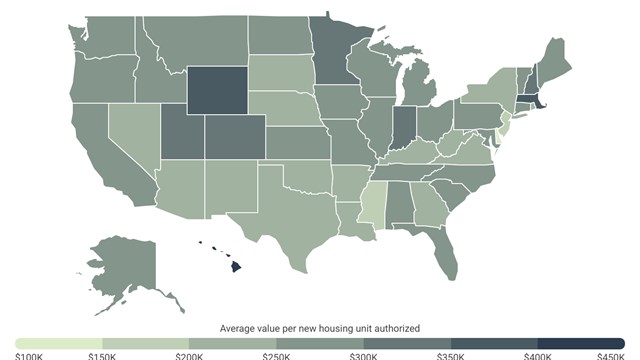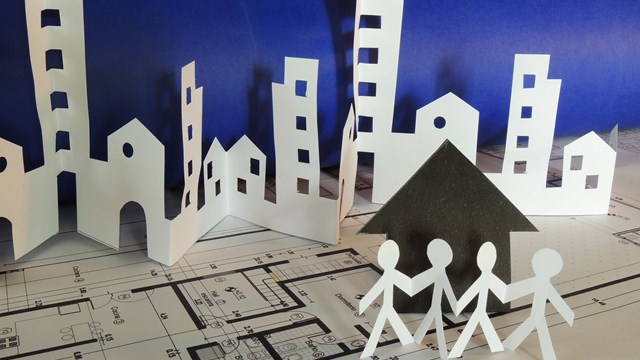
Brooklyn on the Rise
A Look at New Development
By Lisa Iannucci
Rachel Weingarten will be the first person to tell you that Brooklyn has soul. “There is so much to discover in Brooklyn; every day I’m learning something new,” she says. Weingarten is president of GTK Marketing Group, a Manhattan-based public relations and marketing consulting firm. “I’ve lived in numerous neighborhoods in Manhattan at one point or another, but have always moved back to Brooklyn.”
Lots of other people share Weingarten’s view, it seems. In the last few years, Brooklyn has seen a massive increase in population, residential development, business opportunities…and prices. While some hail the changes as a sign that Brooklyn has finally come into its own as a destination to rival Manhattan, others—including many longtime residents—are upset that their beloved borough’s skyline is changing, and concerned that rising prices may price them right out.
A Secret No More
“For so long, Brooklyn was ‘our little secret,’ says Cynthia Ramnarace, a Brooklyn-based writer. “The people who lived here knew how great it was to have the convenience of Manhattan’s proximity without its craziness. There are strong neighborhoods here, and when I was growing up, you had multiple generations of the same family living on the same block. You grew up, you got married, and you stayed, because it was home.”
Unfortunately, Ramnarace says that’s now changed. “Nowadays, who can afford to stay? The families who built Brooklyn, who made it what it is today, can’t afford to continue that tradition,” she explains. “Sure, you want property values to go up, but you also want to know you could afford to stay in your own neighborhood.”
“Brooklyn was way underserved in terms of quality housing and retail,” says Jed Walentas, principal of Two Trees Management, one of the borough’s larger development firms, and the one often credited with the residential resurrection of DUMBO. “But now, that’s finally just starting to change. For a long time, the way New York City was set up politically; it was hard for Brooklyn to get its fair share. [Mayor Michael] Bloomberg has put a huge focus on projects here.”
Dynamic Development
That focus from City Hall, as well as an influx of new residents hot to own property, has spurred a development renaissance in Brooklyn that astounds even the seasoned pros—in terms of both pace and pricing.
“I’m selling some real estate that’s going for $1,000 per-square-foot in DUMBO,” says Karen Heyman, a senior managing partner with brokerage firm Century 21 William B. May, pointing out the downside of Brooklyn’s furious pricing pace. “For many residents, even if they wanted to sell their place and go to another home, prices that high can mean they wouldn’t be able to afford it. Many people can’t really sell to cash out and still stay in the area.”
“There’s growth everywhere in Brooklyn,” says Rachaele Raynoff, press secretary for the New York City Department of City Planning, “but at the same time, we’re trying to protect character. Sometimes development has been too much of a good thing.”
Hot Water(front)
Also currently in the middle of development is 70 Washington Street, a 259-unit luxury condo project in a fully rehabbed, circa-1905 industrial building.
“A year ago, this building was fully occupied with commercial tenants that we relocated,” says Walentas. The full service condo building will include such amenities as a 24-hour concierge, gym, washer/dryer in each apartment, and chic bamboo flooring. At press time, the building had sold almost 100 units at around $800 per-square-foot.
Other waterfront neighborhoods are trying to keep pace with demand as well. According to Raynoff, there are more than 8,000 new units of residential development on the planning docket in the Greenpoint-Williamsburg area alone. Residential properties are being developed with commercial help to enact the area’s vision and needs, says Raynoff, noting that in Greenpoint-Williamsburg, for example, developers plan to create access to the waterfront, which currently doesn’t exist.
Further Inland
Even away from the water, Brooklyn’s interior neighborhoods have shown themselves to be more than fertile ground for development projects of all kinds—both residential and commercial. According to Tamar Kisilevitz, project manager and director of marketing for the Brooklyn-based architectural firm Scarano Architects PLLC, developers are not only building new construction from scratch, but are actively rehabbing and converting existing buildings into state-of-the-art living spaces—like the new Toy Factory lofts on Johnson Street in Downtown Brooklyn.
“We also converted The Arches at Cobble Hill—which was originally a church—into 60 luxury condos,” Kisilevitz continues, “And we’re working on another similar project right now on Cumberland Avenue. We converted an armory on Clermont in Clinton Hill’s historic district into 110 apartments, as well as a lot of the factory buildings around us in Vinegar Hill and DUMBO and Downtown Brooklyn.”
The Ratner Factor
And speaking of Downtown Brooklyn, probably one of the most talked-about projects going up in the whole borough at the moment are those of developer Bruce Ratner and his Forest City Ratner Companies. In a much-publicized move, Ratner has proposed a plan to revitalize and fully develop Downtown Brooklyn and the Atlantic Avenue corridor by building a basketball arena for the New York Nets in the neighborhood. The stadium complex would be completed by 2008—and would be accompanied by 17 distinct office and apartment buildings along Atlantic Avenue.
Supporters of the $435-million project claim it will bring thousands of permanent jobs to the borough, and 4,500 units of much-needed housing. Opponents of the project feel that the likelihood of affordable housing going to those who need it most is slight, and that such a massive commercial development scheme will irrevocably impact the fabric of surrounding residential neighborhoods.
To help quell concerns about lack of affordable housing in Brooklyn, in May of 2005, Ratner signed a memorandum of understanding between the Association of Community Organizations for Reform Now (ACORN), a Brooklyn community coalition, and Forest City Ratner Companies agreeing that 50 percent of the new housing to be built at Brooklyn’s Atlantic Yards site will rent for less than market rate.
Pushing the Boundaries
Brooklyn’s boom has created development opportunities even in once unthinkable locations. Beacon Towers, a 79-unit residential condominium being developed by Brooklyn-based builder Leviev Boymelgreen is a 23-story high-rise that is going up literally within earshot of the Brooklyn Bridge.
According to Chris Halliburton, executive vice president at Warburg Realty Partnership, “There’s a triangle between Williamsburg-Bushwick-Bed Stuy-Clinton Hill where there are at least 15 new buildings are being put up. Some of them are being developed for the expanding Hasidic community in Williamsburg, though most are for the general population.”
“Greenpoint is almost impossible to buy into on word-of-mouth because it’s so hot,” adds Chris Havens, leasing director of Two Trees Management. “The Bedford-Stuyvesant area is also very hot, because it has the most affordable houses closest to Manhattan and Downtown Brooklyn.”
“There’s also the Schaeffer’s Landing project in Williamsburg,” says Halliburton. “It’s right on the water, and it’s an extremely interesting project.” Halliburton says he understands that the project is being marketed to the Hasidic community, middle-income tenants, and market-rate buyers alike. “It’s a fantastic location,” he continues. “The views across the East River are just tremendous.”
And don’t forget Red Hook, says Christopher Thomas, a realtor with William B. May’s Brooklyn office. The neighborhood, a former home of light industry, was just beginning to enjoy some commercial prosperity when its cobblestoned streets and 19th century buildings were cut off from the rest of Brooklyn by the construction of the Gowanus Expressway in 1946. Construction of some gritty public housing projects between the expressway and the waterfront in the 1960s further contributed to the neighborhood’s isolation, and Red Hook lay largely undeveloped until a few artists and some pioneering families moved into the area seeking cheap rents on large spaces. Since then, things have slowly begun to change for the better.
“IKEA is there now,” says Thomas, “and a Fresh Fields [grocer] is coming, too. There’s some really great 19th century architecture there, and the Brooklyn waterfront in Red Hook is some of the best of all neighborhoods anywhere. I believe the retail influence will alter the character of the neighborhood dramatically, for better or worse. It will certainly increase the traffic, and the city will most likely adapt [the transit system] to make getting out there easier.”
More Big Plans
Along with residential development comes a boon in ancillary services and commercial development too. “The Brooklyn Navy Yard is bursting at the seams—existing buildings are 97 percent occupied,” says Eric Deutsch, president and chief executive officer of the Brooklyn Navy Yard Development Corporation (BNYDC). The Navy Yard is home to more than 220 tenants that employ over 4,100 workers. The City of New York owns the yard, which occupies 300 acres along the Brooklyn waterfront between the Manhattan and Williamsburg Bridges. It has 40 buildings totaling over 3.5 million square feet of space. It also has six active dry docks and four busy piers, and will generates close to $20 million for the city in rent revenue this year.
The vast majority of the tenants in the Navy Yard are small businesses—current tenants include antiques dealers and refurbishers, construction contractors, trucking companies, government offices, artists (the area is especially coveted by large-format sculptors), and even a newspaper for Haitian expats living in the city.
“As we look to the future, we see the growth of Brooklyn Navy Yard as a haven for small businesses and as a generator for jobs for the people of New York,” says Deutsch.
Given all that—the gentrification, development, quality services, and diversity—will the real estate bubble burst in Brooklyn anytime soon? Heyman for one doesn’t think so.
“The bubble won’t slow down,” she says. “I see people coming to Brooklyn to get more for less and they are falling in love with the area. I was raised here, and so many people thought of Brooklyn as not the best area, but it was always great.”
Lisa Iannucci is a freelance writer living in Poughkeepsie, New York.






Comments
Leave a Comment